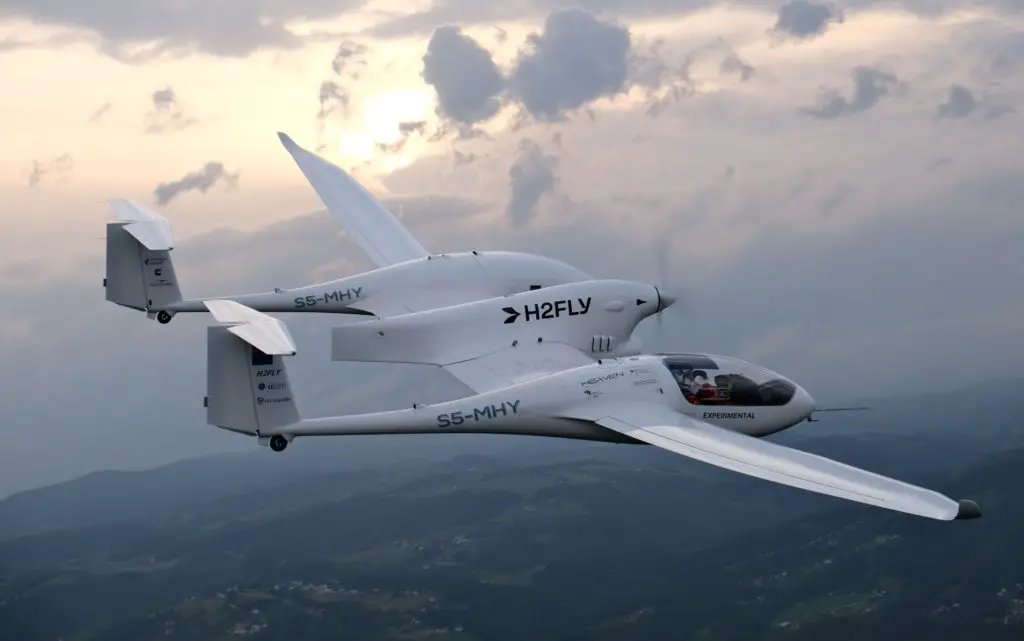
Hydrogen-Electric Aviation Takes Flight: H2FLY’s Liquid Hydrogen Milestone
November 5, 2025When H2FLY lifted off from Maribor Airport on September 9, 2025, it wasn’t just another test flight—it felt like a sneak preview of hydrogen-electric aviation‘s next chapter. The twin-fuselage HY4 glided above the runway, its liquid hydrogen flight system humming softly. And get this: all it left in its wake was water vapor, a clear sign that zero-emission aircraft aren’t just sci-fi—they’re already happening, slicing through an industry still belching roughly 2.5% of global CO₂.
From Lab to Runway: The Rise of Hydrogen Flight
No overnight success here. It took decades of sweat at the German Aerospace Centre (DLR) to get us to this point. Back in the early 2010s, DLR’s Antares program kicked off experiments with hydrogen-electric propulsion for light aircraft. Out of those lab walls sprang H2FLY, which spent more than ten years fine-tuning cryogenic storage tanks, evaporation modules and PEM fuel cells. By 2023, ground tests had nailed down reliability, clearing the runway for Maribor’s historic hops.
- Piloted demos on gaseous hydrogen to lock in safety protocols
- Switch to liquid hydrogen for higher energy density and longer range
- Full-system proof-of-concept tests tying hardware, software and controls together
“We’ve proven the concept; now we’re sprinting toward commercial readiness,” an H2FLY spokesperson said with a grin.
Under the Hood: How Hydrogen-Electric Powertrains Work
At the heart of the HY4 lies its hydrogen fuel cell powertrain. Here’s a quick tour of the key components:
- Cryogenic storage chilling hydrogen to –253 °C, packing in maximum energy
- Evaporation module that warms liquid hydrogen into gas via a water-glycol loop
- PEM fuel cells combining hydrogen and oxygen—exhaust? Just water vapor
- Electric motors delivering instant torque and whisper-quiet thrust
- Redundant safety sensors keeping tabs on pressure, temperature and flow
Who’s in the Cockpit of Change?
H2FLY emerged from DLR’s R&D engine room, then in 2021 scored strategic backing from Joby Aviation. Though H2FLY stays independent, Joby’s investment has fast-tracked certification and market entry. “This milestone underscores our commitment to sustainable aviation,” a Joby spokesperson noted.
The flights also drew in the Project HEAVEN consortium—with Pipistrel Vertical Solutions, Air Liquide and EKPO Fuel Cell Technologies—showing what a pan-European team-up can achieve.
Real Benefits for Airlines and Passengers
With regulators cranking down on carbon footprints, hydrogen-electric planes deliver:
- Zero in-flight emissions—only water vapor
- Extended range thanks to energy-dense liquid hydrogen
- Quieter operations that keep airport neighbors happy
- Infrastructure synergies boosting the broader hydrogen economy
- New jobs in manufacturing, maintenance and ground services
- Global standards forged through early certification efforts
H2FLY is targeting CS-23 certification by 2027, setting the stage for regional hydrogen-electric aviation by 2030.
Building the Hydrogen Highway on the Ground
Slick airframe tech needs equally smooth ground support. Airports will need:
- Insulated storage—vacuum-jacketed tanks to minimize boil-off
- Dispenser tech—cryogenic pumps and specialized nozzles
- Production links—on-site electrolysis or consistent green hydrogen deliveries
- Specialized training for crews handling cryogenic hydrogen safely
Pilot projects in Maribor and several European hubs are already stress-testing these systems, proving the logistics can keep pace with propulsion breakthroughs.
A Worldwide Race to Zero Emissions
The buzz around zero-emission aircraft is global:
- North American startups are flying fuel cell commuter prototypes
- Asian hubs are mapping out hydrogen corridors for regional carriers
- Regulators worldwide are harmonizing safety and certification rules
- Airline alliances are plotting demo routes to showcase the tech
That kind of momentum means a breakthrough in one region quickly ripples everywhere, speeding hydrogen’s journey from lab bench to jet bridge.
Looking Ahead: Commercial Flights by 2030?
The four-seat HY4 has already chalked up about 932 miles on a single liquid hydrogen flight refill. Next on deck is a beefed-up 1.5 MW system for a Dornier 328, in partnership with Deutsche Aircraft, aiming for first flight in 2026. Those demo runs will feed directly into EASA and international certification dossiers.
Sure, hurdles remain—scaling green hydrogen via renewable electrolysis, building airport refueling stations and navigating a maze of approvals. But with green hydrogen costs tumbling and policy frameworks evolving, true commercial hydrogen-electric aviation feels within reach. If H2FLY and its allies keep up the pace, you might book your first zero-emission regional trip before the decade wraps up.



 With over 15 years of reporting hydrogen news, we are your premier source for the latest updates and insights in hydrogen and renewable energy.
With over 15 years of reporting hydrogen news, we are your premier source for the latest updates and insights in hydrogen and renewable energy.
Very exciting reading your article on this fuel cell twin boom plane. I grew up with an early innovator of aviation and it was so interesting seeing his creations early and lator.